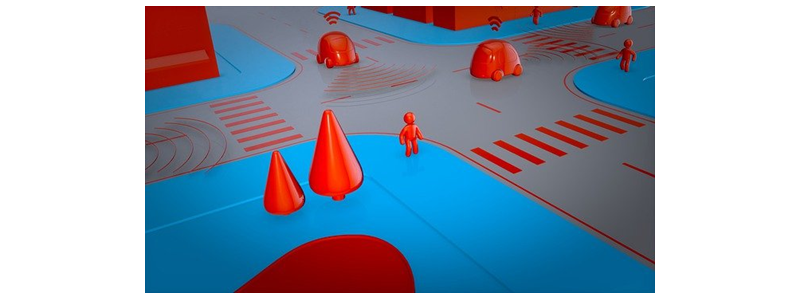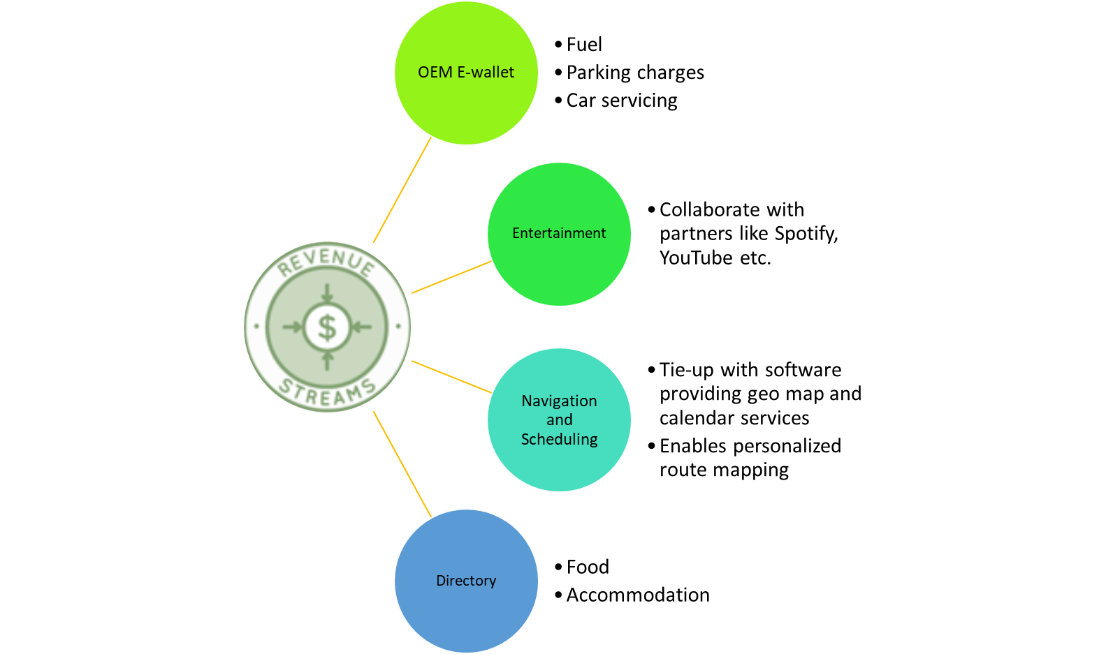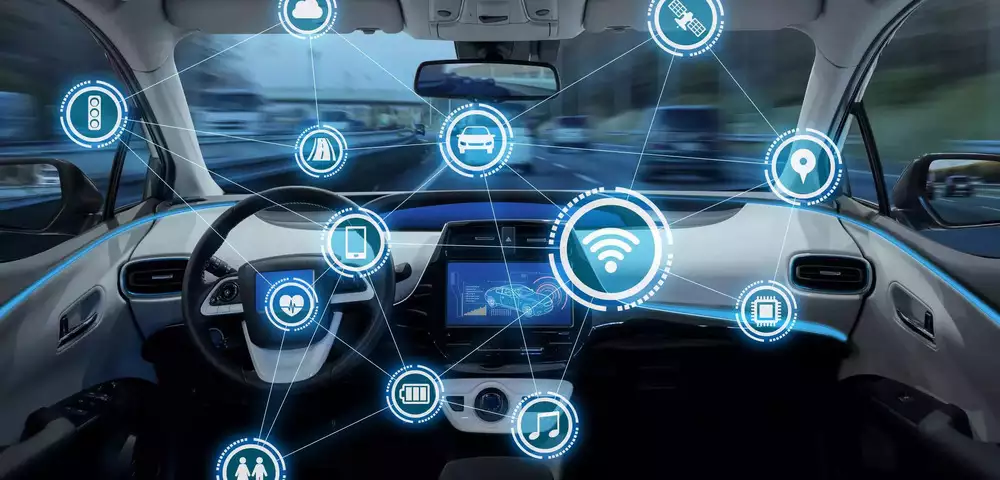What are Connected Cars?
Any car or vehicle connected to the internet via a WLAN (Wireless Local Area Network) can be called as Connected Cars. As the car is connected to the internet it can download/upload data for different purposes and communicate with the internet bi-directionally. The basic intention to do so is to make driving easier and safer by introducing certain functions via smartphones, real time updates and access to emergency services in case of accidents. A report from MarketsandMarkets states that the global Connected Car market will reach to $56.3 Billion by 2026.
How do Connected Cars work?
Currently 2 kinds of technologies are being used in the architecture of Connected Cars:
- Embedded systems - a built-in antenna for internet communication & a dedicated microcontroller for data processing embedded in the vehicle itself,
- Tethered systems - a dedicated system that connects with external devices like smartphones for internet connection.
Both technologies use an Operating System and an Embedded SIM (eSIM) technology/ Cellular IoT modules to download/upload data, update itself routinely, connect with other cars in the vicinity for coordination and even provide internet services to the passengers.
Connected Vehicle technology uses 5 different ways of communication to work
:
- V2I - Vehicle to Infrastructure
- V2V - Vehicle to Vehicle
- V2P - Vehicle to Pedestrian
- V2C - Vehicle to Cloud
- V2X - Vehicle to Everything
Applications of Connected Cars

As opposed to a simple isolated vehicle, Connected Cars have a lot of potential benefits. Some of these include:
- Blind spot warning - an array of sensors embedded in the vehicle provides 360o vision to the driver covering up their blind spots.
- Intersection movement assist – As more and more cars get connected via smartphones, the coordination system in a connected car helps in reduction of road accidents.
- Real time weather monitoring – alerts driver to real time weather changes that helps them to regulate their speed. This reduces the chance of damage to cars and lives at the same time.
- Eco friendly traffic harmonization - with real time traffic data being fed to the vehicle from the internet, drivers can make decisions to switch lanes or take different routes to lighten the traffic burden.
- Efficient transportation management – Connected cars saves time and fuel which is crucial for public transportation. GPS enables real time car tracking which improves security and reliability.
- Cooperative adaptive cruise control - in extremely narrow lanes with difficult terrains and visibility, cars communicating with each other can coordinate their speeds and movement patterns to avoid road accidents and congestion. Connected Car technology solves the problem by mapping out a virtual road for the driver.
- Dynamic Parking- With the access to the internet, the driver is informed about available parking spaces in real time.
- Vehicle Diagnostic - With an alert system on the dashboard, connected cars have the ability to warn drivers about problems such as vehicle temperature, leak in transmission fluid, issue with the radiator and many more. Early diagnostics help to reduce repair time & cost significantly.
Why now?
In the last decade, smartphones have provided continuous access to news, entertainment, communication, and many other features to us. Automakers are attempting to provide a similar experience to us as daily commutes get longer and technology gets better. However, there are some key reasons why connected cars is becoming a necessity.
Reduce number of accidents
According to World Health Organization's report of June 2022, 1.3 million people die each year due to road accidents. Connected cars will contribute in reducing the accidents.
Improve Personalization Experience
This is the era of personalization where every individual prefers to listen to personalized music/content. Connected cars enables this feature by collaborating with Spotify, Apple's car play, Google etc. and provides variety of digital content.
Minimize financial burden of traffic congestion
US economy alone incurred loss of approx. $87 million due to traffic congestion. Connected cars has advanced features which takes weather conditions and real-time traffic into consideration. It will also guide fuel stations and plans trips according to the calendar.
Better fleet management
Fleet management systems include linked vehicle sensors, fuel monitoring, vehicle usage analytics, speed control, car leasing options, fleet and driver management and task management that helps to manage a fleet of hundreds or thousands of vehicles.
Road ahead
Connected cars will improve the customers driving experience and will lead to more vehicle sales in future. However, it cannot come at the cost of development for OEMs. Connected car technology will be sustainable only if OEMs receive the benefit through incremental revenues. At the same time, on the supply side it needs to be ensured that there is enough talent available to produce the technology required at scale.
Revenue streams for OEMs
The advancement in technology of connected cars will generate additional revenue stream for OEM's. According to Mckinsey & Co., the revenue pool for automotive OEMs will expand by 30% up to $1.5 trillion by 2030. This revenue will come from a variety of connectivity services such as enabling new applications and providing remote services and software upgrades. OEMs could bring their own wallets for various services such as fuel, parking and vehicle servicing. OEMs could work with companies like Spotify and You tube to provide in-car entertainment. Navigation and scheduling services along with use of directory services for food and accommodation could also contribute to the revenue pie.
Emerging Talent Requirements
Connected cars will demand more and more talented workers and engineers to design and manufacture these vehicles. The workforce of tomorrow for the automotive industry will look much different than what it is today. The need for talent in the automotive industry will come from other sectors such as software, telecom and data science. Few areas in which talent management is required for enabling connectivity in vehicles.
- Software application and embedded software development
- Cloud computing
- Data Science and
- Support Engineering
Vehicles are enabled with multiple Electronic Control Units (ECUs) that work with sensors to capture inputs from different parts of the vehicle. These ECUs are designed by software developers, hardware engineers and embedded software developers to achieve the required function. As data gets captured during vehicle operations, this data gets pushed into the cloud which needs efficient computing. Connectivity over cloud ensures that the driver receives alerts regarding any/every incident on route providing more time to think and react. Huge amount of data is generated every day as the vehicle functions and this data needs to be analyzed for better function, diagnostics and driving experience. Ultimately, as cars become connected and data starts flowing through the system, vehicle needs to be upgraded with latest software through OTA (over the air) updates which becomes a key function of the support engineering and development team to keep the vehicle connected.

Sources
1. https://www.godigit.com/motor-insurance/car-insurance/find/connected-cars-in-india
2. https://www.acko.com/car-guide/connected-cars-features-benefits/
4. https://en.wikipedia.org/wiki/Connected_car#Drawbacks_and_Challenges
5. https://en.wikipedia.org/wiki/Connected_car#Types_of_connectivity
6. https://www.marketsandmarkets.com/Market-Reports/connected-car-market-102580117.html
7. https://www.its.dot.gov/cv_basics/cv_basics_what.htm
